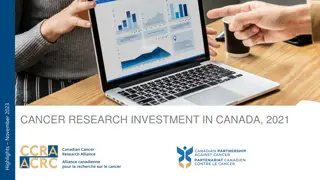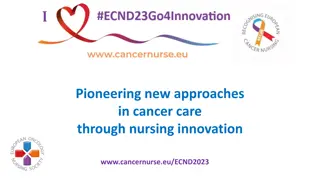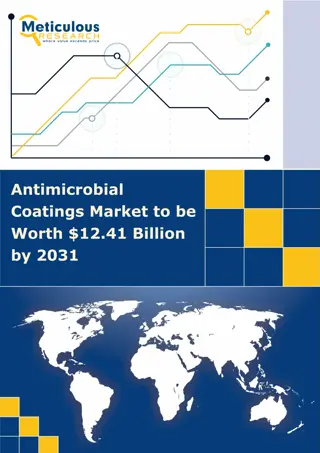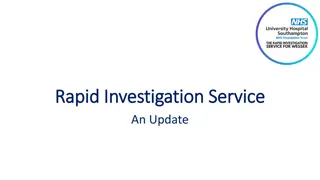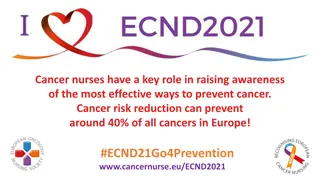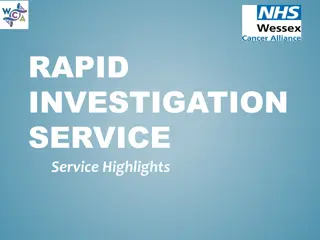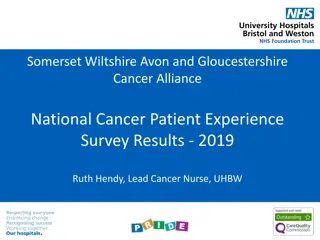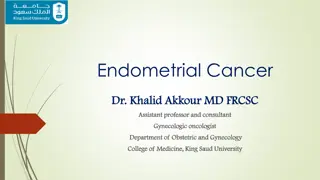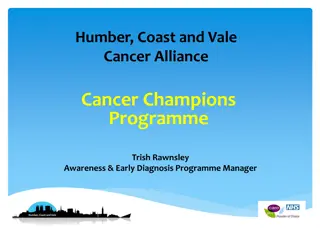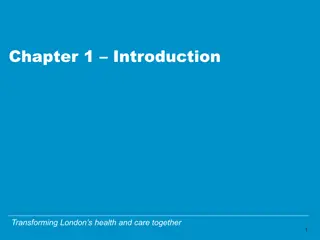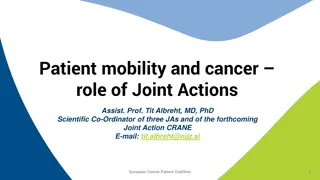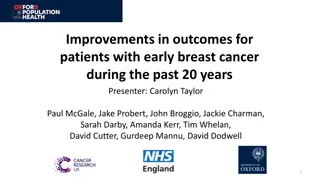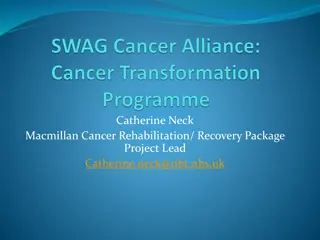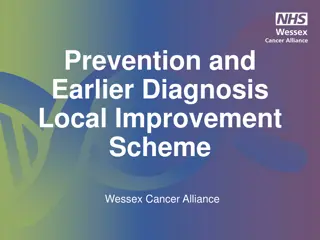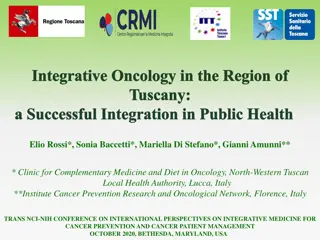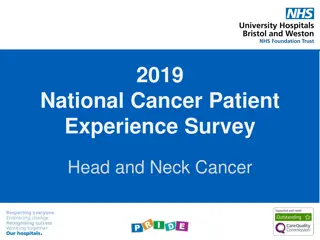28 Day Faster Diagnosis Standard in Cancer Services
The 28 Day Faster Diagnosis Standard focuses on timely referral to definitive diagnosis for suspected cancer patients, enabling prompt treatment initiation or providing peace of mind. Key principles include starting the clock upon receipt of referral and ending it upon diagnosis communication or treatment referral. Communication protocols for ruling out or diagnosing cancer are outlined, emphasizing direct, documented interactions. Diagnostic uncertainty mandates continuous monitoring until a conclusive diagnosis is reached.
Download Presentation

Please find below an Image/Link to download the presentation.
The content on the website is provided AS IS for your information and personal use only. It may not be sold, licensed, or shared on other websites without obtaining consent from the author. Download presentation by click this link. If you encounter any issues during the download, it is possible that the publisher has removed the file from their server.
E N D
Presentation Transcript
28 Day Faster Diagnosis Standard Ed Nicolle, Cancer Services Manager, RUH
28 DAY FASTER DIAGNOSIS STANDARD What is the 28 Day Faster Diagnosis Standard? The national cancer strategy, Achieving World Class Cancer Outcomes, published in 2015 by the independent Cancer Taskforce, recommended a new four week (28 Day) referral to definitive diagnosis pathway for suspected cancer patients. The standard puts a focus on the crucial time after symptoms are first spotted. For those diagnosed with cancer, treatment can begin as soon as possible. For those where cancer is ruled out they can have their minds put at rest more quickly. The standard will apply to all patients referred urgently on the following pathways: Two week wait suspected cancer Breast symptomatic Urgent screening programme The standard will be performance managed from April 2020, with mandatory data collection from April 2019.
28 DAY FASTER DIAGNOSIS STANDARD Key principles The clock starts with the receipt of the two week wait referral by the provider who will first see the patient, or for screening services when a patient with an abnormal result is referred for further assessment. The clock can only end at the following times: When the patient is informed of a diagnosis of cancer When the patient is informed that cancer has been ruled out When the patient is referred for treatment before a clinical diagnosis of cancer can be made New national early diagnosis pathways have been developed in lung, prostate and colorectal. A specific % target has yet to be set for this standard. The standard will not apply to patients who declined all diagnostic investigations or appointments, or who transfer to private care
28 DAY FASTER DIAGNOSIS STANDARD Communicating when cancer is ruled out Reasonable forms of communication for patients where a diagnosis of cancer has been ruled out are as follows: Direct communication with the patient (phone, skype, etc) Written communication by letter or email Face to face communication at an outpatient appointment or diagnostic test This will need to be documented to ensure it can be recorded on the Cancer Register/Infoflex. The SWAG Cancer Alliance Operational Group have agreed that for written communication the end date will be the date the letter or email is typed/sent to the patient.
28 DAY FASTER DIAGNOSIS STANDARD Communicating when a patient is diagnosed with cancer All diagnoses of cancer should be given through direct face-to-face communication with the patient, unless otherwise explicitly agreed with the patient. This will need to be documented to ensure it can be recorded on the Cancer Register/Infoflex. Diagnostic uncertainty If a cancer diagnosis has not been ruled out, the clock will continue to run until a diagnosis is made. For a patient where a specific cancer has been ruled out, but is still considered high risk and requiring further investigation, a referral to another specialty should be considered and the clock continues.
28 DAY FASTER DIAGNOSIS STANDARD Incidental findings If a patient is referred for a suspected cancer and a different cancer is incidentally found that is unrelated to the referral, the 28 Day Faster Diagnosis pathway will end when the patient is told of their diagnosis. Histological diagnosis In some circumstances the clinical team will want to wait until they have histology before making a decision as to whether the patient has cancer. In these circumstances the clock would end after a histological diagnosis, at the point the outcome is communicated to the patient. This does not need to happen for all patients as the clinical team can consider they have sufficient information to tell the patient that they have cancer before having the histology.
28 DAY FASTER DIAGNOSIS STANDARD Data collection The following nine data items are to be collected for each patient (where applicable): CANCER FASTER DIAGNOSIS PATHWAY END REASON PRIMARY CANCER SITE CANCER FASTER DIAGNOSIS END REASON CANCER CARE SPELL DELAY REASON CANCER CARE SPELL DELAY REASON COMMENT CANCER FASTER DIAGNOSIS PATHWAY EXCLUSION REASON CARE PROFESSIONAL TYPE CODE METHOD OF COMMUNICATION ORGANISATION SITE ITENTIFIER



